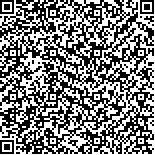| 引用本文: |
曾鑫冰,唐三,谢若曦,贺骊文,邓常清,杨筱倩,黄小平.化痰通络汤对脑缺血/再灌注损伤大鼠肠道菌群的影响[J].湖南中医药大学学报,2023,43(6):982-991[点击复制] |
|
| |
|
|
| 本文已被:浏览 2668次 下载 1026次 |
| 化痰通络汤对脑缺血/再灌注损伤大鼠肠道菌群的影响 |
| 曾鑫冰,唐三,谢若曦,贺骊文,邓常清,杨筱倩,黄小平 |
| (湖南中医药大学血管生物学实验室, 湖南 长沙 410208;湖南中医药大学中西医结合病原生物学湖南省重点实验室, 湖南 长沙 410208;湖南中医药大学中西医结合心脑疾病防治湖南省重点实验室, 湖南 长沙 410208) |
| 摘要: |
| 目的 从肠道菌群探讨化痰通络汤抗脑缺血/再灌注(ischemia/reperfusion, I/R)损伤的作用机制。方法 将30只SPF级雄性大鼠随机分为假手术组、模型组及化痰通络汤高剂量组(28.66 g/kg)、化痰通络汤中剂量组(14.33 g/kg)、化痰通络汤低剂量组(7.16 g/kg)、阳性对照组(依达拉奉4 g/kg+丁酸梭菌5.0×108 cfu/mL),每组5只。采用大鼠局灶性脑I/R模型,给药组在造模前2 h灌胃给药,缺血2 h后进行再灌注,于再灌注后24 h后取脑组织和新鲜结肠粪便,氯化三苯四氮唑(triphenyl tetrazolium chloride, TTC)染色法测定脑梗死体积,16S rRNA测序检测结肠内容物肠道菌群变化。结果 TTC染色显示,脑I/R后大鼠出现脑梗死灶,与模型组比较,化痰通络汤高、中、低剂量组均能显著减轻脑梗死体积,减少梗死率,且效应具有剂量依赖性(P<0.05,P<0.01)。Alpha和Beta多样性分析显示,与假手术组比较,模型组大鼠肠道菌群发生显著变化(P<0.05),与模型组比较,化痰通络汤中、高剂量组能提高大鼠肠道菌群丰富度和多样性,并能正向调节脑I/R损伤大鼠肠道菌群和优势菌种(P<0.05)。结论 化痰通络汤可能通过改善肠道菌群失调、调节肠道微生物种类和数量发挥对损伤大鼠的脑保护作用。 |
| 关键词: 脑缺血|再灌注损伤|脑梗死|化痰通络汤|肠道菌群|16S rRNA |
| DOI:10.3969/j.issn.1674-070X.2023.06.004 |
| 投稿时间:2022-11-10 |
| 基金项目:湖南中医药大学“十三五”一级学科基础医学建设项目(06);湖南省高校创新平台开放基金项目(18K067);湖南省大学生创新训练项目(S202110541058);湖南省研究生优秀教学团队项目(〔2019〕370-118)。 |
|
| Effects of Huatan Tongluo Decoction on gut microbiota in rats with cerebral ischemia-reperfusion injury |
| ZENG Xinbing,TANG San,XIE Ruoxi,HE Liwen,DENG Changqing,YANG Xiaoqian,HUANG Xiaoping |
| (Laboratory of Vascular Biology, Hunan University of Chinese Medicine, Changsha, Hunan 410208, China;Hunan Key Laboratory of Integrative Pathogen Biology, Hunan University of Chinese Medicine, Changsha, Hunan 410208, China;Hunan Key Laboratory of Cerebrovascular Disease Prevention and Treatment of Integrated Chinese and Western Medicine, Hunan University of Chinese Medicine, Changsha, Hunan 410208, China) |
| Abstract: |
| Objective To discuss the mechanism of action of Huatan Tongluo Decoction (HTTLD) on gut microbiota in rats with cerebral ischemia-reperfusion (I/R) injury. Methods The total of 30 SPF-grade male rats were randomly divided into sham-operated group, model group, positive control group (Edaravone 4 g/kg+Clostridium butyricum 5.0×108 cfu/mL), high- (28.66 g/kg), medium- (14.33 g/kg) and low-dose (7.16 g/kg) HTTLD groups, with 5 rats in each group. The focal cerebral I/R rat model was established. The medication groups were given intragastric administration 2 h before modeling, and reperfusion was performed 2 h after ischemia. The brain tissue and fresh colon feces were taken 24 h after reperfusion. Then the cerebral infarction volume was measured by triphenyl tetrazolium chloride (TTC) staining and the changes in the gut microbiota of colonic contents were determined by 16S rRNA sequencing. Results TTC staining showed that cerebral infarction appeared in rats after cerebral I/R. Compared with model group, the cerebral infarction volume and the infarction rate in high-, medium- and low-dose HTTLD groups were significantly lower, and the effects were dose-dependent (P<0.05, P<0.01). Alpha and Beta diversity analysis showed that compared with sham operation group, the changes in the gut microbiota of rats in model group were significant (P<0.05). Compared with model group, HTTLD enriched and diversified the gut microbiota in medium- and high-dose HTTLD groups, and positively regulated the gut microbiota and dominant bacteria in rats with cerebral I/R injury (P<0.05). Conclusion The protective effects of HTTLD on rats with I/R injury may be achieved by improving the dysbiosis of gut microbiota and regulating the species and quantity of gut microorganisms. |
| Key words: cerebral ischemia|reperfusion injury|cerebral infarction|Huatan Tongluo Decoction|gut microbiota|16S rRNA |
|

二维码(扫一下试试看!) |
|
|
|
|




